Gluteus Maximus Muscle
Gluteus maximus muscle and minimus, as the gluteal muscles, and sometimes referred to informally as the “glutes”) is the main extensor muscle of the hip.
Table of Contents
Gluteus Maximus Muscle Anatomy
Origin
the posterior surface of the ilium, sacrum, and coccyx. It slopes across the buttock at a 45-degree angle.
Insertion
It inserts into the iliotibial tract and the gluteal tuberosity of the femur.
Nerve supply
Inferior gluteal nerve.
Blood supply
The gluteus maximus muscle is vascularized by the muscular branches of the inferior gluteal and superior gluteal arteries, the branches of the internal iliac artery.
Action
the main extensor of the thigh, and assists with lateral rotation.
Function
The gluteus maximus muscle makes four actions on the hip joint; extension, external rotation, abduction, and adduction of the thigh.
When its proximal attachment is fixed, gluteus maximus acts as the main extensor of the hip joint, pulling the shaft of the femur posteriorly.
The external rotation of the thigh happens simultaneously with the extension, assisting in raising the medial longitudinal arch of the foot.
Embryology
The gluteus maximus, like all other limb muscles, arises from the somites, which are bilaterally paired blocks of the paraxial mesoderm. The myoblasts start to migrate into the limb buds during the fifth week of development. There, these cells condense into the dorsal or ventral limb buds. One of the extensors and abductors that make up the dorsal limb buds of the lower extremities is the gluteus Maximus.
Relations
Out of the three gluteal muscles, the gluteus maximus is the largest and most superficial. A thin fascia enveloping it divides the muscle from the surrounding subcutaneous tissue.
Numerous tissues are covered by the deep surface of the gluteus maximus muscle, including the pelvic bones, the proximal attachments of the hamstring muscles, the gluteus medius muscle, and several lateral rotators of the hip, including the piriformis, inferior gemellus, superior gemellus, and obturator internus muscles.
The three bursae are also related to the muscle’s deep surface:
- The larger trochanter and the muscle are divided by the trochanteric bursa.
- If the ischiofemoral bursa is present, it is located on the ischium’s tuberosity.
- Between the gluteus maximus and vastus lateralis tendon is where the gluteofemoral bursa is located.
Gluteus Maximus Muscle Exercise
Strengthening exercise
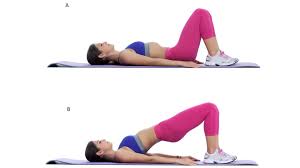
Bridges exercise
Also called “Hip thrust,” this exercise is pretty self-explanatory.
1)Lying flat on the ground with your arms at your sides, knees bent, and feet tucked in, force your heels against the ground while moving your hips upward.
2)Go slow and tighten your core and glute muscles the entire time.
If you’ve never done a hip thrust before, start by using only your body weight. Once you get the hang of it, you can add weight by carefully laying a medicine ball, kettlebell, or barbell across your pelvic area. The extra resistance will help your glutes get stronger
2. Weighted deadlift
1)Stand with your feet parallel and hip-width apart. If you feel comfortable, you can hold light dumbbells.
2)Keep your spine long and your gaze forward. Your shoulders should be back and down.
3)Squeeze the glutes as you fold from the hips, bending your knees so that your seat reaches back past your heels. Resist the urge to round your spine in order to “give in to the weight.”
4)Allow your glutes and belly to control your descent and ascent
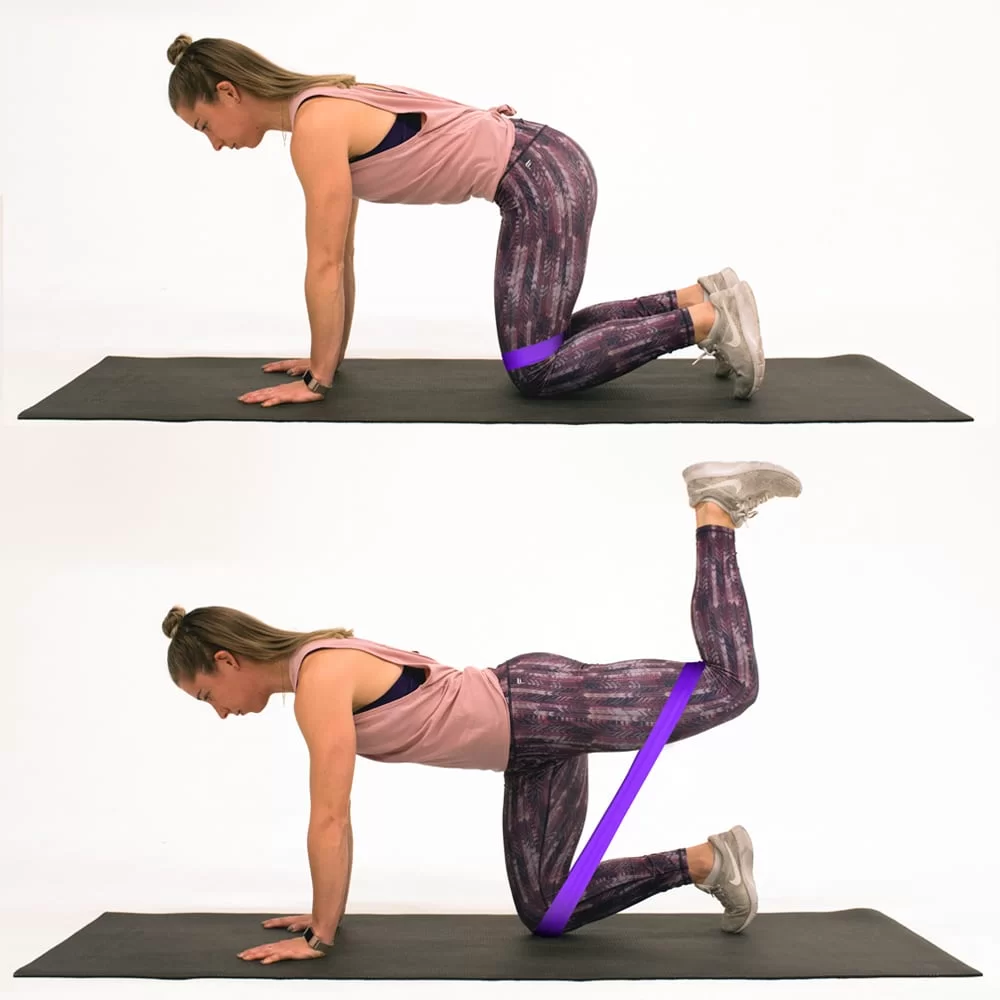
Hip extension exercise
1)Start on all fours with your knees directly under your hips and your hands under your shoulders.
2)Keep your belly drawn in, shoulders back and down, and your spine in a long line. Place a resistance with a resistance band or dumbell.
3)Use the power of your right glute to balance and the power of your left glute to lift up your leg.
4)Flex your foot and raise your knee up a little higher than your hips. Maintain your balance by distributing your body weight equally over both hands and your lowered knee.
4)Repeat 10 times and switch sides. Repeat 2 to 3 sets.
Gluteus maximus Muscle Stretching exercise
1)Sit upright in a sturdy chair. Place your right ankle on your left thigh, just above your knee. Place your hands on your shins.
2)Keeping your spine straight, lean slightly forward to deepen the stretch.
3)Hold for 20–30 seconds.
4)Return to the starting position. Repeat with the other leg.
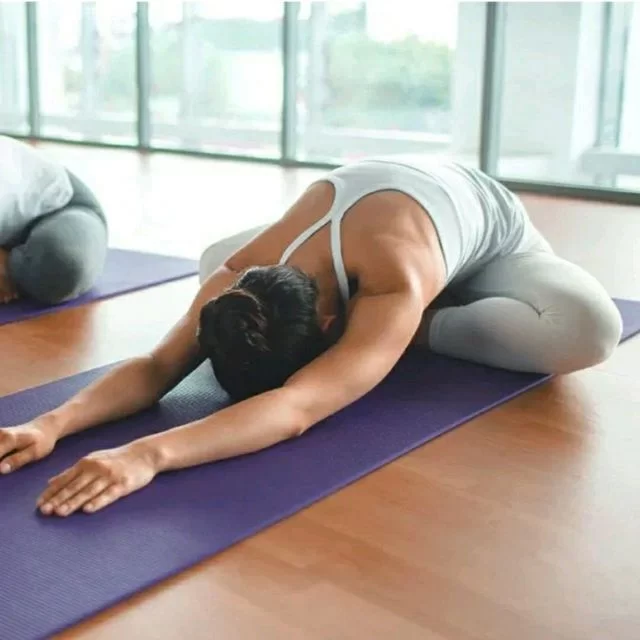
Cross-legged glute stretch:
1)Sit on the ground cross-legged, with your left foot tucked into your right thigh. Your right leg would be in front of your left shin.
2)With your arms outstretched, gently lean your torso forward over your crossed legs.
3)Hold the stretch for 30 seconds.
4)Repeat the stretch with your right foot tucked into your left thigh.
Anatomical Variations
Variations of the gluteus maximus in anatomy and biomechanics are documented in the literature.
One study, for instance, looked at the sample population’s muscle variability with regard to its movement arms, or the distance between the joint axis and the line of force applying on that joint. The iliotibial tract’s and the gluteal tuberosity’s varying insertion sites are responsible for the significant degree of diversity observed in the gluteus maximus muscle, according to the study.
Physiological variations are another factor contributing to gluteus maximus variation. Because it allows the hip joint to extend, the gluteus maximus muscle is one of the most crucial muscles for athletes to strengthen because it facilitates explosive motions.
The relationship between the gluteus maximus muscle and the quadriceps femoris ratio in athletes who are quicker and slower was investigated in a 2018 study. The greater the ratio, the faster the athlete, according to the results.
Although bigger cohorts would be required to elucidate the results, another 2018 study raises the possibility that related hip muscles may become more atrophied following hip arthroplasty.
When comparing patellofemoral pain syndrome patients to healthy persons, differences in the neuromuscular activity of the gluteus maximus were also observed.
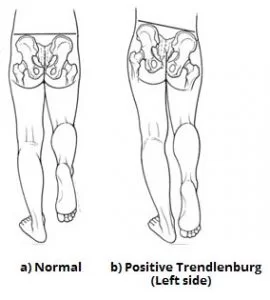
Clinical Importance
Trendelenburg Sign
The Trendelenburg sign is produced when the patient is asked to stand unassisted on each leg in turn. In a positive sign, the pelvic drop will occur on the unsupported leg. Pelvic drop can be recognized by observing the level of the iliac crests on both sides.
For example, if the left gluteal muscles are weak, the right side of the pelvis will drop when the patient stands on their left leg (and the right leg is unsupported).
Examination of Gluteus Maximus Function
In a clinical context, gluteus maximus function can be assessed. The patient lies prone, with their lower limb extended, as the test starts. The patient next stretches their hip and clenches their buttocks to the greatest extent feasible as the examiner palpates the gluteus maximus, feeling for a contraction.
Gluteus Maximus Dysfunction
Inferior gluteal nerve dysfunction is most likely the source of gluteus maximus dysfunction; this would make it difficult for the patient to get up from a seated posture, climb stairs, and lose hip extension. Posterior hip dislocation is the most frequent cause of poor gluteal nerve dysfunction. Another cause of inferior gluteal nerve dysfunction is improper intramuscular (IM) injection placement.
The upper outside quadrant of the buttock is where the IM injection should be placed. The superior and inferior gluteal nerves could be injured elsewhere.
Gluteus Maximus Muscle Pain
Numerous conditions can lead to pain in the gluteus maximus muscle, which is the biggest muscle in the buttocks.
The following are some typical causes of gluteus maximus muscle pain:
- Muscle Strain or Injury: The gluteus maximus muscle may get strained due to overuse or sudden movements, resulting in pain. Exercises like sprinting, jumping, or lifting large objects might cause this.
- Piriformis Syndrome: The Piriformis muscle, which passes through the buttocks, can cause spasms or tightness that might irritate the sciatic nerve nearby, resulting in discomfort that travels down the leg and through the buttocks. This condition is known as Piriformis Syndrome. Piriformis syndrome is the term for this.
- Sitting for Long Periods: Sitting for extended periods of time can place strain on the gluteus maximus muscle, which can cause pain or discomfort. People who have desk jobs or lead sedentary lifestyles often experience this.
- Muscle imbalances: Tightness or weakness in the muscles around the hips, hamstrings, or other areas can cause compensatory motions that strain the gluteus maximus, resulting in pain.
- Trauma or Impact: The gluteus maximus muscle can be injured and cause pain when there is a direct trauma or impact to the buttocks, such as falling or being hit.
- Inflammation: The gluteus maximus muscle can become painful and uncomfortable due to inflammatory disorders such bursitis, which is an inflammation of the bursa sacs that cushion the joints, or tendonitis, which is an inflammation of the tendons.
- Sciatica: Pain that travels down the leg may be caused by compression or irritation of the sciatic nerve, which passes through the buttocks. Although it has nothing to do with the gluteus maximus muscle specifically, this might lead to referred pain in the buttocks.
Rest, ice or heat therapy, Physical therapy with stretching and strengthening exercises, and over-the-counter pain medicines are the usual treatments for gluteus maximus muscle pain. It’s crucial to seek medical assistance in more severe situations or if the pain doesn’t go away in order to rule out any underlying illnesses and get the right therapy.
Gluteus Maximus Paralysis
Walking on a level, or absolutely flat surface, is unaffected by gluteus maximus paralysis. Only a portion of the stance phase of ambulation involves gluteus maximus contractions. This stage of stance lasts from the moment the heel touches the ground until the foot is flat.
In order to initiate extension, the gluteus maximus resists further hip flexion. When lifting something heavy or getting up from a seated position, the gluteus maximus contracts actively.

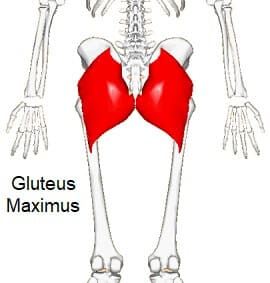
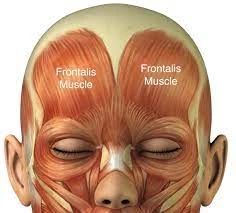

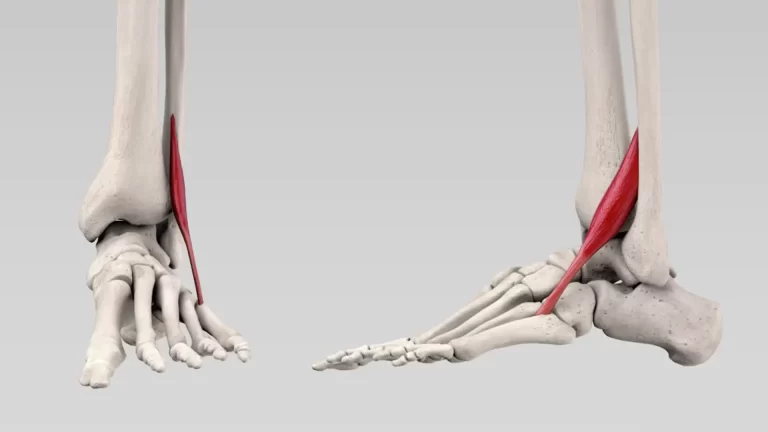
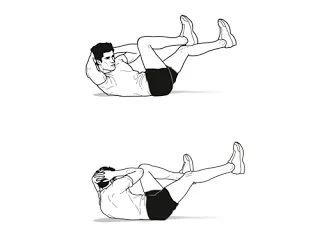

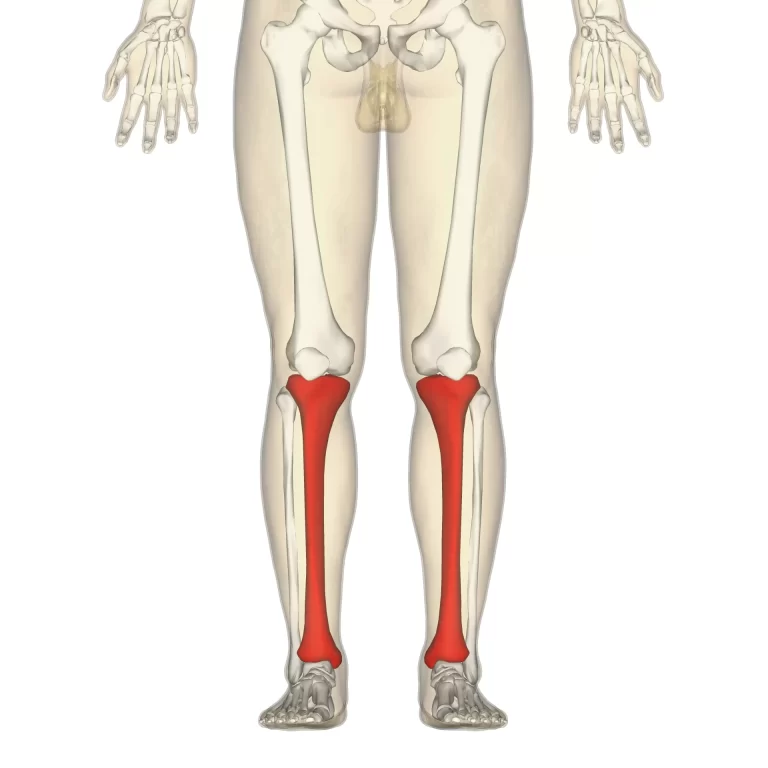
12 Comments